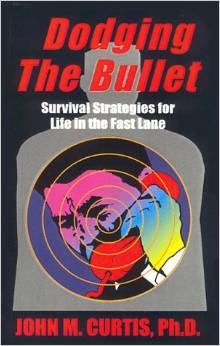Oxford University researchers questioned whether the government’s statistics about Covid-19 deaths were exaggerated raises some pressing questions both in terms of mortality figures but about the politics of the disease. Things changed dramatically in the U.K. when 56-year-old Prime Minister Boris Johnson tested positive for coronaviurs AKA SARS CoV-2 or Covid-19 March 27. Before that Johnson was seriously listening to his chief science adviser Sir. Patrick Vallance who subscribed to the rather arcane theory of infectious disease known as “herd immunity.” Vallance tried to persuade Johnson at the time to avoid lockdowns like in the United States, Europe and Asia, instead allowing British citizens to get infected, create antibodies and develop population immunity. But when Johnson was transferred to London’s St. Thomas Hospital ICU April 7, Vallance fell into disrepute, it was no longer a joke.
Johnson was so sick that 46-year-old British Foreign Minister Dominque Raab was deputized as Prime Minister while Johnson fought for his life. Johnson had no underlying medical conditions, unless you consider mild obesity a pre-existing medical condition. Turns out obesity is one of the negative prognostic features of Covid-19, making recovery all the more difficult. Oxford’s researchers found that over 30% of diagnosed deaths from Covid-10 over the summer died primarily from other causes. Britain’s Office of National Statistics [ONS] over-counted the numbers of Covid-19 deaths. Some 3,877 [7.8%] Covid-19 was not the primary cause of death. In July and August the numbers jumped to 28.8% of deaths attributed to Covid-19 were primarily from other underlying diagnoses, including diabeties, heart disease, cancer and autoimmune diseases.
Like so many death diagnoses, Covid-19 becomes the latest catch-all like pneumonia, something that describes little other than death by lung infiltration. In Great Britain, 465 out of 1,617 or 28.8% of deaths were erroneously assigned to Covid-19 when the patients had a more serious death diagnosis like blunt-force trauma from a car accidents or death by myocardial infarction AKA heart attack. World Health Organization [WHO] warned doctors that the “significant condition” should appear on the death certificate as primary cause of death. Deaths from conspicuous medical conditions “are not due to Covid-19 and should no be classified as such,” said WHO. Dr. Jas Oke, from Oxford’s Center of Evidence-Bashed Medicine, found vast numbers of patients died “with” Covid not “from” Covid. Oke believes the distinction is important to get an accurate assessment of Covid-19 related deaths.
Oxford researches see a change in the death rates from Covid-19, primarily because it’s infecting more young people, having a less lethal impact. “At the beginning of the epidemic we only saw this in a few cases, but this in increasing because a lot more people have now had Covid,” Oke said. Oke said death rates are important to know to accurately give a picture of the impact of the disease. Looking at the data, it’s clear that Covid-19 is having less impact on overall death rates in the U.K. ONS reported that 263,826 deaths were reported during the Covid-19 pandemic but only 218,143 carried the Covid-19 death diagnosis. ONS data revises downward the number of deaths from Covid-19, first reporting 49,560, now revising it downward to 45,583. While seemingly unimportant in the big picture, OKE thinks it’s important for the ONS to get it right to give an accurate picture.
Oxford researchers want to know in the lockdown period in of March through June, how many citizens died of other opportunistic deaths because the Covid-19 epidemic kept ordinary citizens from getting proper medical treatment. “In the lockdown, there may have been even more deaths that were not caused by Covid, but were caused by actions o lockdown—and that is important to know,” said Oke. U.K.’s Covid-19 death toll was revised downward in August by 5,377 deaths to a total of 41,329, including deaths within 28 days of a positive test result. Some doctors, like Dr. Paul Hunter, from the University of East Anglia, said it’s difficult for doctors to know how much Covid-19 impacted patients’ underlying, more serious health conditions, making the actual death diagnosis less relevant. Hunter thinks Oxford’s downward revision makes no difference, because the patients died with Covid-19.
If the Oxford study has any relevance to the U.S., there’s been talk that Medicare pays higher reimbursement rates to doctors and hospitals for Covid-19. While it’s hard to say whether some doctors or hospitals have gamed the system to get bigger reimbursements, Oxford researchers found other primary diagnoses for deaths from Covid-19 patients. “It’s a difficult judgment call to make,” Hunter said. “Say, for example, you’ve got a patient who has leukemia, they get Covid, and a couple of weeks later they die,” Hunter asked, questioning whether a Covid-19 diagnosis would be appropriate at death. Hunter wondered what you’d do if the patients had pneumonia when they died. Would a Covid-19 death diagnosis be appropriate when you know the patients actually died of pneumonia. These are relevant questions when determining when it’s appropriate to assign Covid-19 as the death diagnosis.
About the Author
John M. Curtis writes politically neutral commentary analyzing spin in national and global news. He’s editor of OnlineColumnist.com and author of Dodging The Bullet and Operation Charisma.



